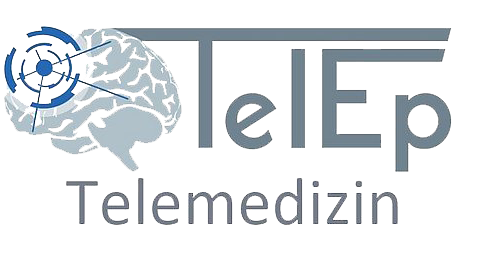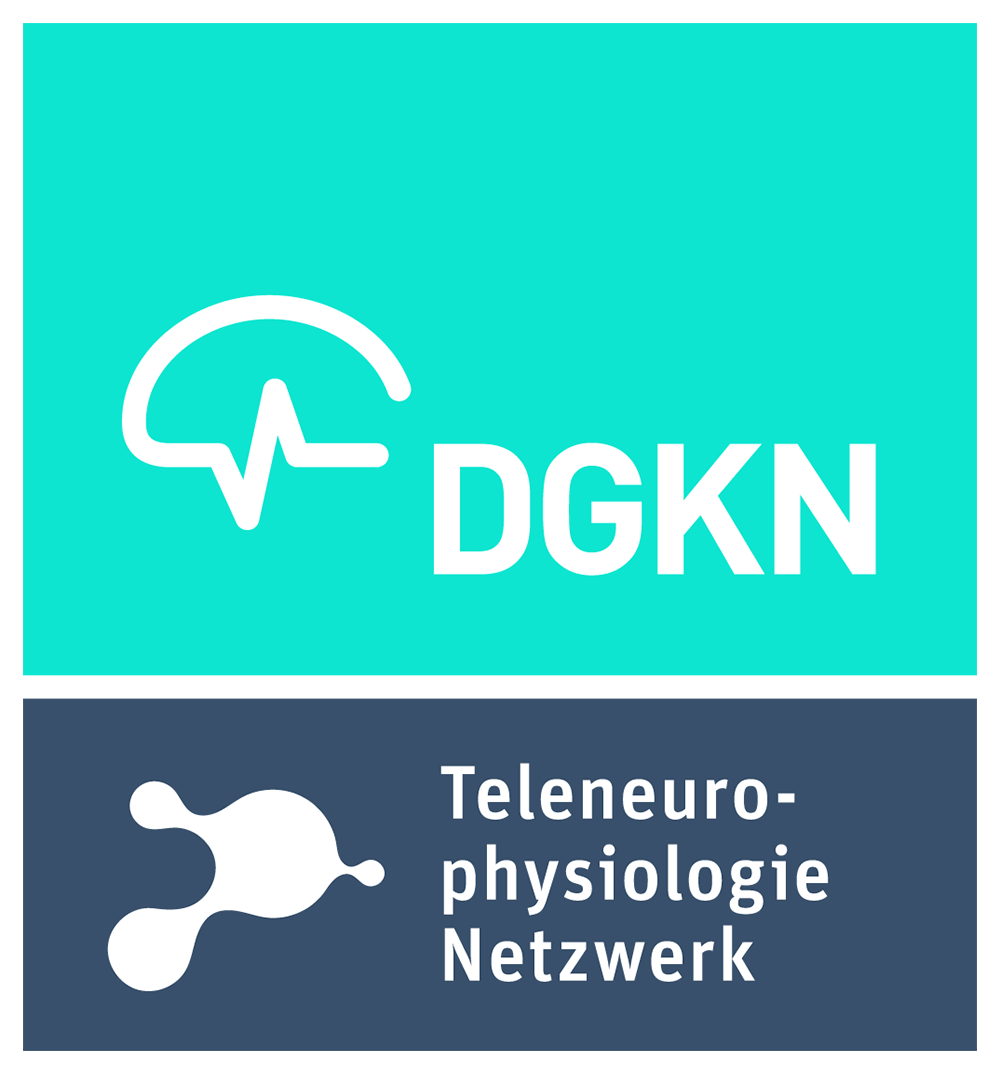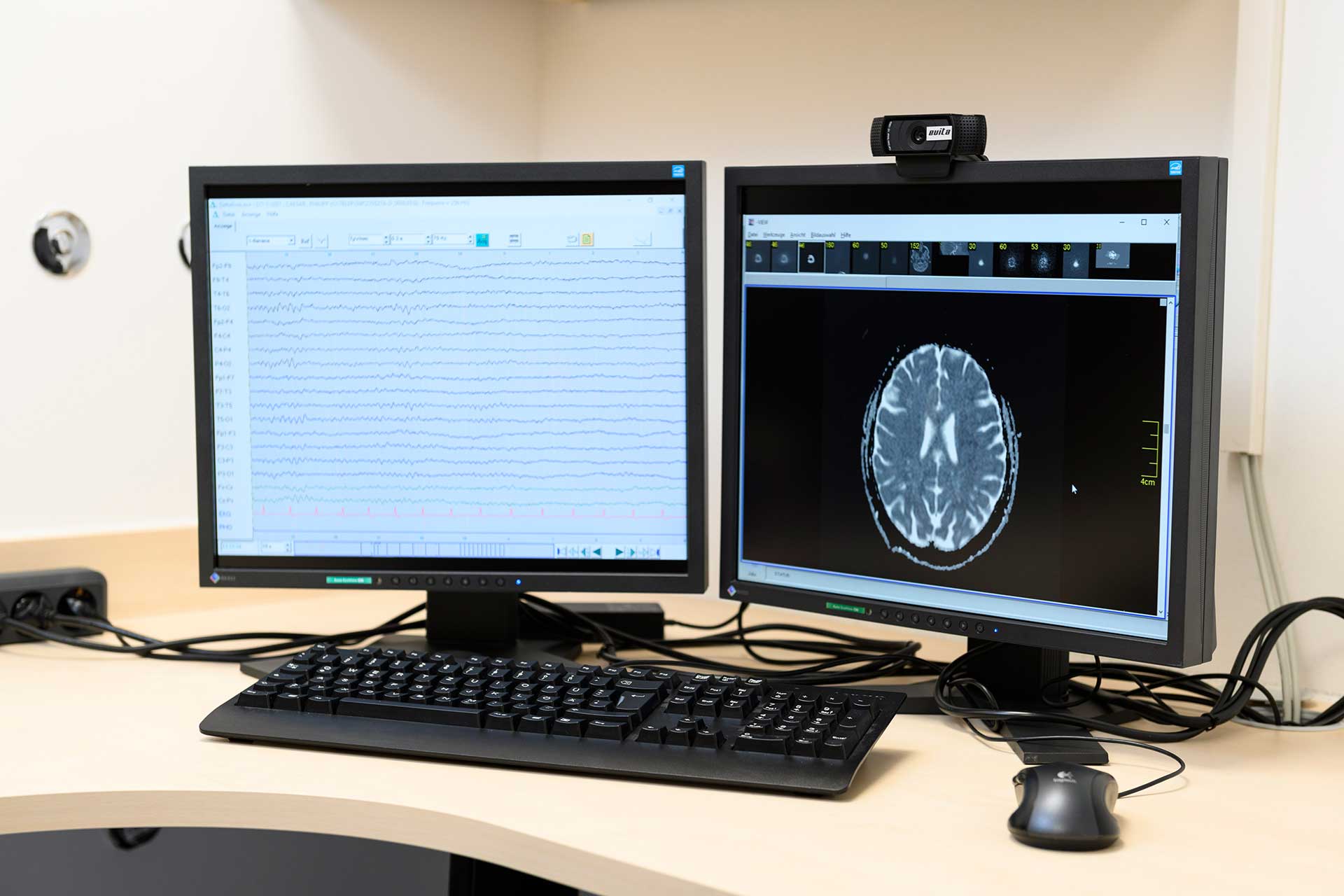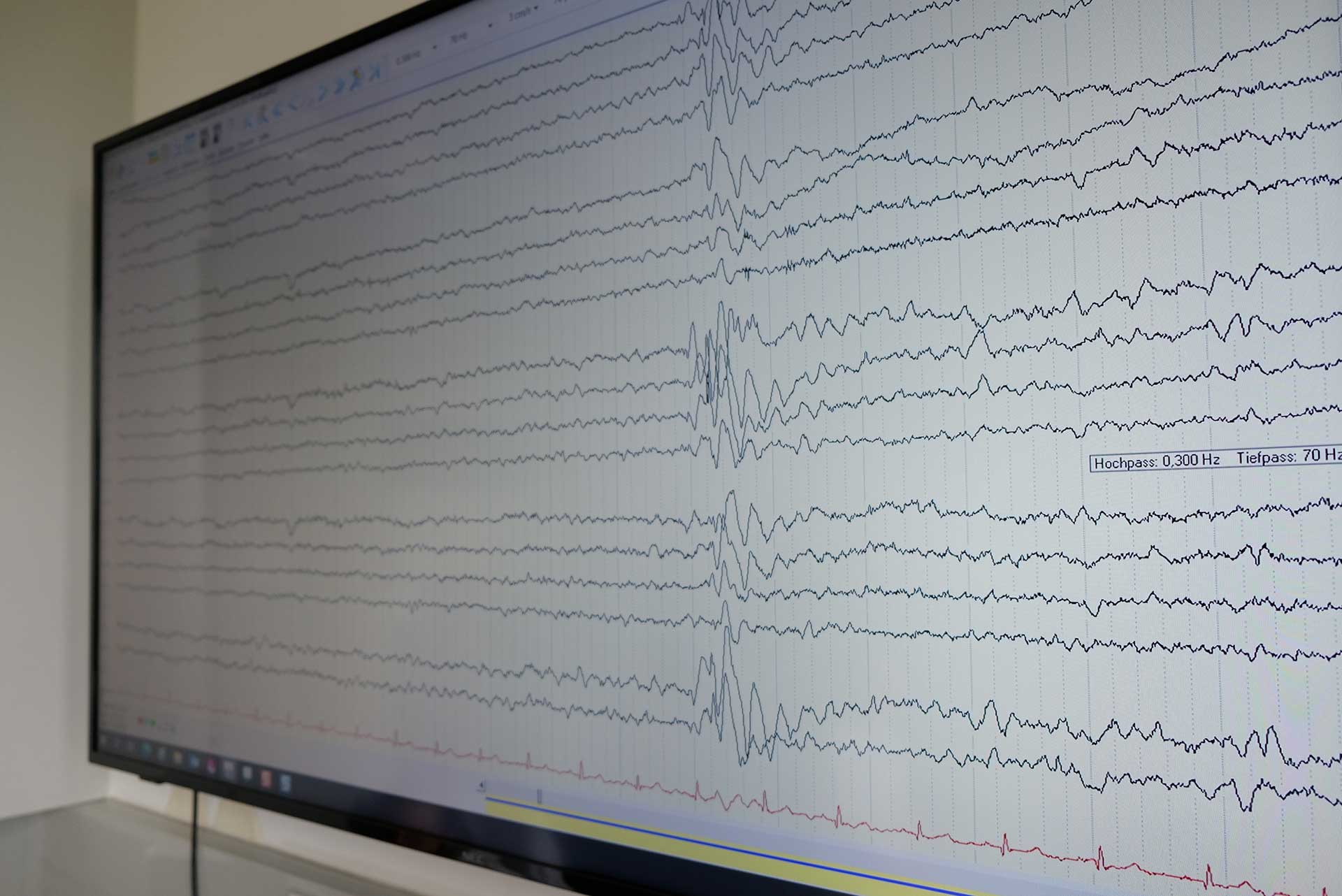Epilepsy – A common neurological disease
Between 0.5% and 1% of the population suffer from repeated epileptic seizures. This means that in Germany there are well over 400,000 and in Bavaria more than 60,000 people who suffer from epilepsy.
Epilepsy can occur at any age, from infants, to children, young adults, working-age adults and senior citizens.
There are more than 50 different forms of epilepsy, most of which lead to epileptic seizures with intermittent loss of consciousness and/or general cramps leading to a fall.
It is not uncommon for seizures to occur several times a week or even several times a day. The rapid and correct diagnosis of the type of epilepsy may be decisive for treatment and determines the prognosis.
The strain of epilepsy
Due to the unpredictable nature of the repeated epileptic seizures, epilepsy has a severe effect not only on the patients themselves, but also on their families and their wider social environment. In addition to the actual seizures, patients are at risk of injury from the seizures (possibly requiring in-patient care as a result), social exclusion and stigmatization, depression and increased mortality. Mortality among those suffering from epilepsy is two to three times higher than in the general population. Status epilepticus in particular, which is characterized by a persistent long-lasting epileptic seizure, has rates of mortality of 30–50 % and must be classed as a life-threatening emergency. Status epilepticus is a relatively common complication.
The socio-economic consequences of epilepsy are also considerable. The medical costs incurred by active epilepsy are estimated to be 10,000 euros per patient and year in Germany. Direct medical expenses (in particular costs for hospitalization and medicine) and indirect medical expenses (three times higher rates of unemployment, early retirement, sick days) play an equal role. It has been estimated that epilepsy accounts for costs of over 3 billion euros per year in Germany.
Diagnosing epilepsy
A diagnosis of epilepsy is based on three pillars: clinical symptoms, electroencephalography (EEG) and cerebral imaging (MRI). There are other possible examinations, but these are not necessary for all patients. When making a diagnosis, it is important to differentiate between the different epileptic syndromes, as these require different options for treatment. It is also important to differentiate epileptic seizures quickly and accurately from other common differential diagnoses such as syncope, or fainting. An increase in knowledge surrounding epilepsy has made diagnosis more multi-faceted, and at the same time more effective. As a result, there is a major need for expert knowledge concerning the special diagnostic evaluation of the various types of epilepsy and the options for treating them.
Treating epilepsy
Over recent years, there has been a great increase in treatment options for the various types of epilepsy and treatments have become more complex, making specialist medical knowledge ever more crucial. Across Germany, for example, there are significantly more than 20 compounds available for treating focal epilepsy, and many of them are used in combination. Targeted, timely and adequate treatment is crucial.
The status epilepticus mentioned above is particularly significant, as it can be overlooked, especially in its non-convulsive form, if the doctor providing treatment lacks the necessary expertise. Depending on its severity, it must be treated sufficiently within a matter of minutes or hours in order to avoid life-threatening complications. The chances of successful treatment are greater the sooner it is started. That apart, identifying patients who require non-drug based treatment options, specifically epilepsy surgery, is part and parcel of treating epilepsy and is the preserve of national centers.





